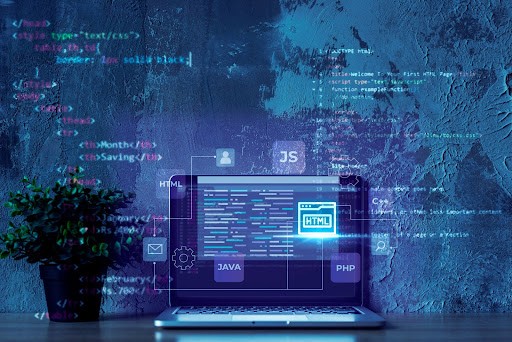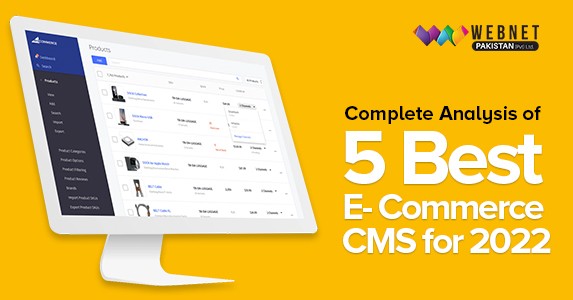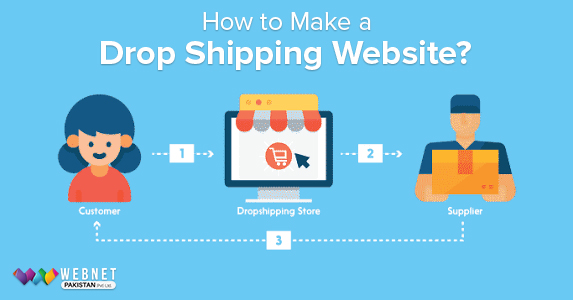Web Design vs Web Development: Know the difference
Web Design and Web Development in Website Creation: What is the difference?
In the constantly changing world of digital media, your website is usually the first point of contact between your business or brand and potential clients. It serves as your online identity's physical manifestation and 24-hour marketing weapon.
A website is built similarly to a digital work of art where engineering and artistry meet. Web design and web development act as the architects and engineers of the online world within this complex process. They are two separate but interconnected disciplines.

Web designers provide the visual identity, user experience, and aesthetic appeal that pique visitors' interest and imagination as digital artists. On the other hand, web developers are the maestros in the background who weave the complex code and database magic required for a website to run smoothly.
This blog aims to discover the distinctive features of web design and web programming and explain why they both form the fundamental pillars of a strong online presence. We will explore these two parallel universes inside web creation.
In this blog, we'll further explore these essential elements of web development, identifying their distinctions and learning how their cooperation is necessary for a complete online presence.
THE CRAFT OF USER EXPERIENCE THROUGH WEB DESIGN
Web design is primarily concerned with a website's interaction and visual components. Its primary objective is to offer consumers a user-friendly and beautiful interface.
1. Visual Elements: Web design artistically expresses a website's identity. Designers employ color, images, and layout to evoke feelings and lead visitors. Web designers choose color schemes to complement consumer preferences and the brand's messaging. They consider the psychology of fonts to ensure the text not only transmits information but also effectively expresses the main idea of the content.
2. User Interface: The link that connects a website's functionality with visual appeal is called user interface (UI) design. The design element turns static sections into dynamic, interactive parts that successfully draw in people.
One of the main objectives of UI design is to establish a simple and delightful user journey. Great attention to detail is required to create layouts that seamlessly navigate users through the website. Considering how various pieces flow together on a webpage makes the general structure coherent and logical.
Menus are a crucial component of user interface design. They must be aesthetically pleasing and straightforward. Well-placed menus should make the most critical areas of the website easily and quickly accessible to users. For example, dropdown menus can help arrange content in order, making it easier for users to navigate.
Buttons are essential interactive features in terms of user engagement. UI designers use a variety of design strategies, including color, size, and positioning, to make these buttons visually distinctive and clickable. The call is to create CTAs (calls to action) like "Learn More," "Sign Up," or "Add to Cart."
3. Responsive Design: Responsive design is essential due to the increasing usage of mobile devices. The ever-growing variety of devices and screen sizes utilized by today's digital audience is driving the dynamic and evolving aspect of responsive design in web design. Web designers use different strategies and consider various factors to ensure a smooth user experience throughout this broad range.
Fluid layout design is an essential component of responsive design. Whether the device is a desktop display, a tablet in portrait mode, or a smartphone, web designers create layouts that automatically adjust and reflow information to meet the screen size. They use flexible grids and relative units like percentages to retain readability and visual appeal while ensuring that content scales proportionately.

4. User Experience (UX): User Experience (UX) is a vast domain that extends beyond a website's visual appeal. It delves into the psychology of user behavior and aims to create an environment that fosters engagement and empowerment.
UX design revolves around an understanding of user behavior. Web designers carefully consider and research the target audience. They create user personas to represent the different types of visitors a website can attract. In-depth research ultimately influences design decisions, allowing designers to anticipate consumer preferences and pain points.
5. Layout: Hierarchy is one of the most essential factors in content arrangement. Web designers determine how content is presented, especially during a website redesign. They strategically plan to display the most critical information by carefully arranging content items according to their significance. The design should direct the user's attention and entice them into the information.
WEB DEVELOPMENT: THE BACKBONE OF FUNCTIONALITY
1. Front-end Developer: Web development focuses on a website's technical features and transforms the design into a useful online platform.
The fusion of functional science with artistic design is known as front-end development. The front-end developers are in charge of transforming static design thoughts into dynamic ones.
Front-end developers work closely with web designers to turn design mockups into functional web pages. Together, they ensure that the visual aesthetics are accurately fabricated in the code, paying close attention to interactive features, fonts, and color schemes.

2. Back-hand Developer: Back-end development is the backbone of website functionality—the brains behind everything that goes on behind the scenes. Back-end developers are server-side architects; they build an intricate framework that supports websites, maintains databases, and handles user data safely and effectively.
Designing and maintaining databases is one of the core duties of back-end developers. They design and oversee database structures to ensure data is precisely stored, retrieved, and updated. This is especially important for websites with a lot of content, user accounts, or e-commerce developments. A well-designed database structure is the cornerstone of a seamless user experience.
3. Database Management: Database management is the foundation of information storage and retrieval in web development. It ensures that data is efficiently arranged and accessible. This crucial element entails setting up and managing databases—like MySQL, PostgreSQL, or MongoDB—that serve as the website's key data repository.
4. Security: Web developers ensure a website's security by implementing safeguards against malware, hacking, and data leaks.
5. Functionality: Web developers give a website's interactive components life. Forms creation, e-commerce functionality, content management systems (CMS), and other tasks fall under this category.
WEB DESIGNER VS WEB DEVELOPER
Logic versus Creativity
Web design: Web designers use their creative and artistic abilities to create visually appealing layouts and images. Their main concerns are user experience, color schemes, and aesthetics.
Web development: To write code and create a website's technical framework, web developers use logical thinking and problem-solving abilities. Their priorities are performance and functionality.
Customer Engagement
Web design: Designers often communicate with clients to comprehend client preferences, branding, and design requirements. Client feedback heavily influences design choices.
Web development: While developers converse with clients, their primary focuses are project schedules, technical specifications, and functionality.

Rapid Changes Against Steadiness
Web design: Designers must stay current with design philosophies and user experience techniques as web design trends change quickly.
Web development: Developers often have to develop reliable, long-lasting systems that are easy to manage. They must also consider security and scalability.
Software and Tools
Web design: Designers use graphic design software like Adobe Creative Suite, Figma, or Sketch to produce visual assets and prototypes.
Web development: To build and test code, developers utilize various coding tools and integrated development environments (IDEs).
Ongoing Maintenance
Web design: Typically, web designers are more concerned with a project's original design and creative elements and are less involved in ongoing site maintenance.
Web development: Web developers are responsible for regular upgrades and maintenance, such as server administration, database maintenance, and security patching.
THE SYMBIOTIC RELATIONSHIP
Web development and web design are complementary processes rather than separate roles. Collaboration between developers and designers is necessary for a website to be effective.
Communication
The cohesive efforts of developers and designers during the web development process are held together by effective communication. Developers employ their technical know-how and functional skills to bring the creative vision that designers contribute, directing the aesthetic and user experience to reality. This dynamic collaboration depends on constant communication, feedback, and a shared understanding of objectives and specifications to ensure the final product complies with the design intent. Effective communication ensures that every little detail—from color schemes to interactive components and responsiveness is carefully carried out.
Design Integration: When web developers and designers collaborate, something magical, known as design integration, happens. With programs like Photoshop or Sketch, designers produce stunning web designs, yet these designs are more like images. Developers utilize HTML, CSS, and JavaScript, three specialized web languages, to transform them into functional websites.
Feedback: Iterations and continuous feedback are crucial in the feedback loop. Based on developer comments, designers might need to make changes, and vice versa.
Conclusion
When creating websites, web design, and web development are dynamic pairs that collaborate to create an appealing and successful presence. Anyone involved in the web development process must have a thorough understanding of the roles and duties of both disciplines.









0 comment